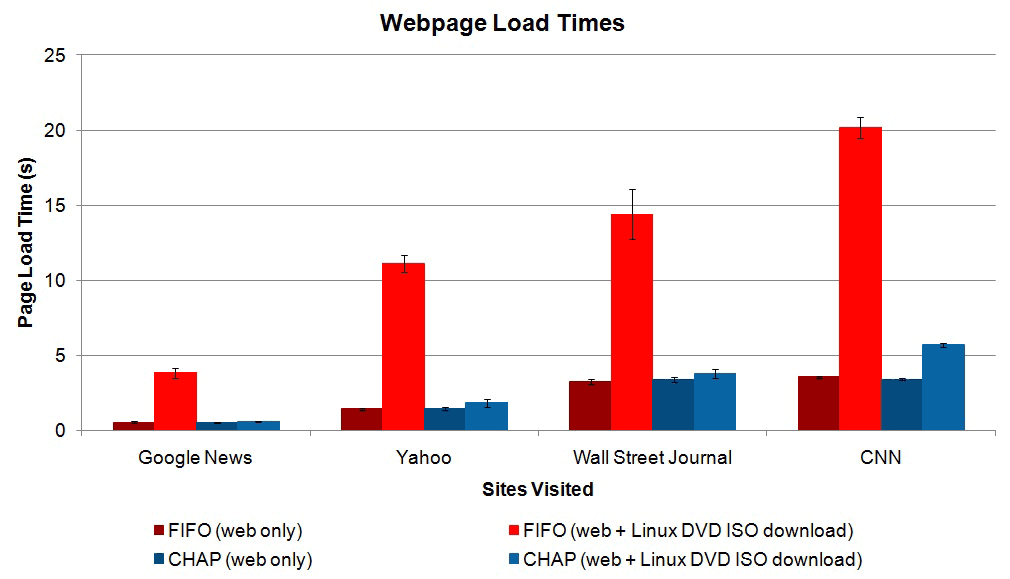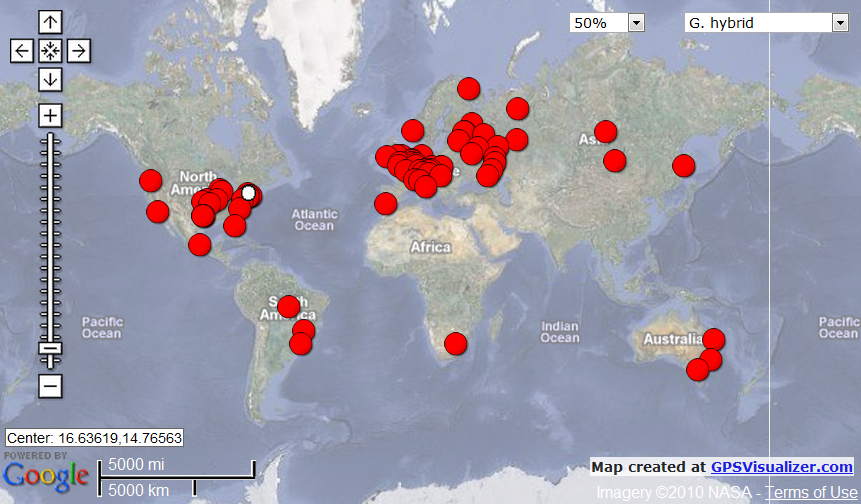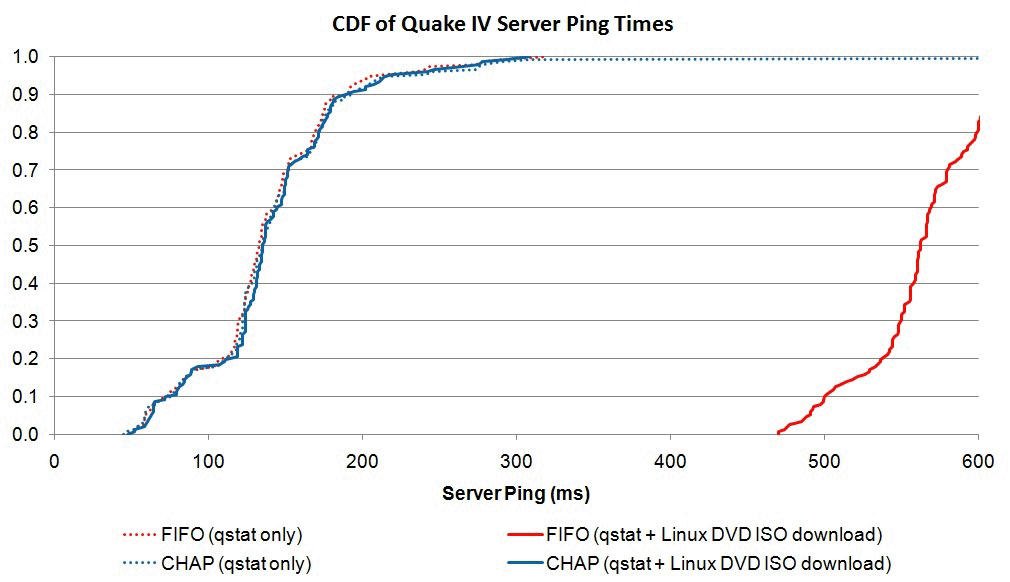Credit-based Home Access Point (CHAP)
by Choong-Soo Lee, Mark Claypool and Robert Kinicki
Increasing availability of high-speed Internet and wireless access points has allowed home users to connect not only their computers but various other devices to the Internet. Every device running different applications requires unique Quality of Service (QoS). It has been shown that delay-sensitive applications, such as VoIP, remote login and online game sessions, suffer increased latency in the presence of throughput-sensitive applications such as FTP and P2P. Currently, there is no mechanism at the wireless AP to mitigate these effects except explicitly classifying the traffic based on port numbers or host IP addresses. We propose CHAP, a credit-based queue management technique, to eliminate the explicit configuration process and dynamically adjust the priority of all the flows from different devices to match their QoS requirements and wireless conditions to improve application quality in home networks. An analytical model is used to analyze the interaction between flows and credits and resulting queueing delays for packets. CHAP is evaluated using Network Simulator (NS2) under a wide range of conditions against First-In-First-Out (FIFO) and Strict Priority Queue (SPQ) scheduling algorithms. CHAP improves the quality of an online game, a VoIP session, a video streaming session, and a Web browsing activity by 20%, 3%, 93%, and 51%, respectively, compared to FIFO in the presence of an FTP download. CHAP provides these improvements similar to SPQ without an explicit classification of flows and a pre-configured scheduling policy. A Linux implementation of CHAP is used to evaluate its performance in a real residential network against FIFO. CHAP reduces the web response time by up to 85% compared to FIFO in the presence of a bulk file download. Our contributions include an analytic model for the credit-based queue management, simulation, and implementation of CHAP, which provides QoS with minimal configuration at the AP.
Publications
- Choong-Soo Lee, Mark Claypool, and Robert
Kinicki. Implementation
and Demonstration of Credit-based Home Access Point (CHAP),
in Proceedings of ACM Multimedia (MM) 2010, Firenze, Italy, October 2010.
- Choong-Soo Lee, Mark Claypool, and Robert
Kinicki. A Credit-based Home
Access Point (CHAP) to Improve Application Performance on IEEE 802.11
Networks, In Proceedings of the Multimedia Systems (MMSys), Scottsdale,
Arizona, February 2010.
- Choong-Soo Lee. CHAP - Credit-based Home Access Point for Overall
Application QoS Improvement, the Passive and Active
Measurement Conference, Seoul, South Korea, April
2009.
Posters
Thesis
Case Study 1: Web Browsing
Please click HERE
to start the videos at the same time to compare the page loading times between DropTail and CHAP
The videos above show that CNN website loads in about 20s and 6s with FIFO and
CHAP queue respectively while downloading a DVD ISO at the same time.
The graph below shows the average webpage loading times of each
website tested. FIFO queue increases the webpage loading times
by a factor of 4-8 while performing a bulk file download at the
same time. CHAP queue provides the same webpage loading times
as FIFO queue in the absense of a bulk file download and
is able to keep the webpage load times about the same even
in the presence of a bulk file download.
Case Study 2a: Quake IV Server Pings
The map above depicts the locations of all the Quake IV servers available through
the master server in March 2010. We used qstat
to ping all the servers to record game server ping times. The ping times are
shown in the graph below as CDFs.



